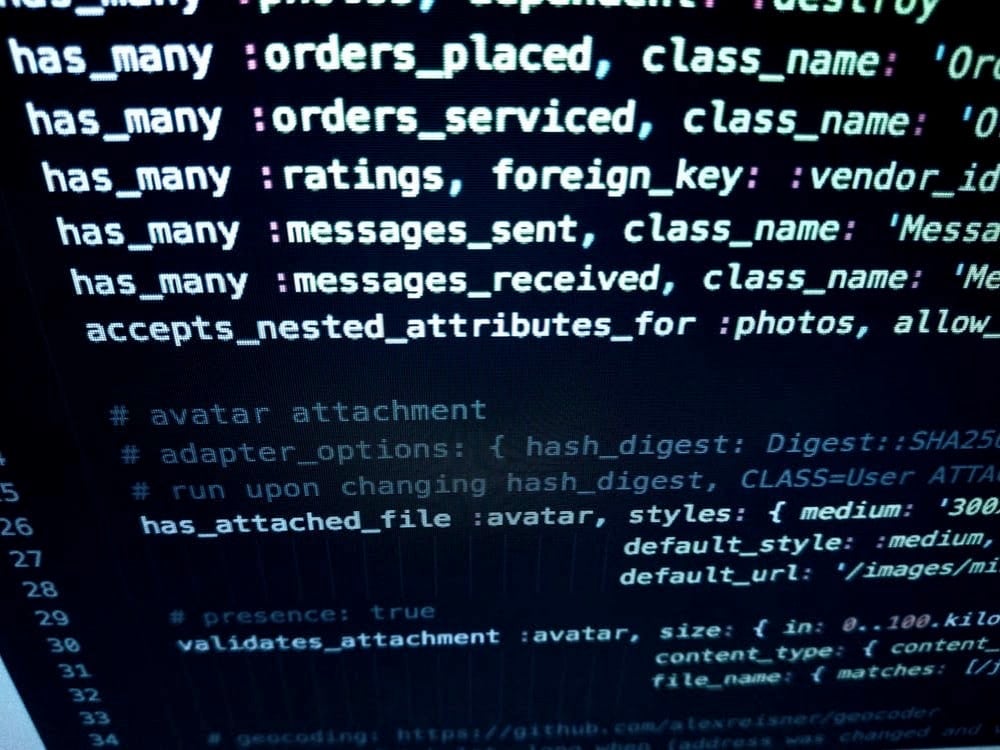JSON allows you to import and export data in a structured manner without complex parsing. When you interact with REST APIs, you’ll frequently pass JSON structures back and forth. NoSQL databases often store documents as JSON, and many configuration files use JSON format for its readability and ease of use.
How is JSON Structured?
JSON structure is remarkably simple and intuitive. It consists of key-value pairs enclosed in curly braces, making it both human-readable and machine-parseable. Here’s an example of a JSON structure showing people’s favorite colors:
{
"Bob": "Green",
"Joe": "Blue",
"Sally": "Red"
}As you can see, it’s very straightforward. We have two related strings separated by a colon and enclosed in quotes. Each pair is separated by a comma, and the entire structure is wrapped in curly braces.
JSON Data Types
JSON supports several data types beyond strings. You can use numbers:
{
"Bob": 1,
"Joe": 2,
"Sally": 3
}You can also use arrays for multiple values:
{
"Bob": [1, 2, 3],
"Joe": [4, 5, 6],
"Sally": [7, 8, 9]
}Nested JSON Objects
JSON truly shines when you need to represent complex, hierarchical data structures. You can nest JSON objects within other objects, creating sophisticated data models. Here’s an example showing everyone’s categorized favorite foods:
{
"Bob": {
"vegetable": "Broccoli",
"dessert": "ice cream",
"bread": "wheat"
},
"Joe": {
"vegetable": "Carrot",
"dessert": "Pie",
"bread": "White"
},
"Sally": {
"vegetable": "Brussels Sprouts",
"dessert": "Cake",
"bread": "Rye"
}
}💡 Pro Tip: In JSON, whitespace doesn’t matter for functionality, but proper formatting significantly improves readability. Use consistent indentation to make complex nested structures easier to understand and maintain.
Working with JSON in Python
Python makes working with JSON incredibly straightforward through its built-in json module. Let’s explore how to parse, manipulate, and work with JSON data effectively using our favorite colors example:
Parsing JSON Data
import json
# JSON string data
json_data = '{"Bob":"Green","Joe":"Blue","Sally":"Red"}'
# Parse JSON string into Python dictionary
parsed_json = json.loads(json_data)
# Access individual values
print(parsed_json["Bob"]) # Output: Green
print(parsed_json["Joe"]) # Output: Blue
print(parsed_json["Sally"]) # Output: RedWhen you use the json.loads() function, the JSON string is converted into a Python dictionary, making it easy to access and manipulate the data using familiar dictionary operations.
Working with Nested JSON Structures
For more complex JSON structures with nested objects, you’ll need to access multiple layers. Here’s how to work with our food preferences example:
import json
# Complex JSON with nested objects
json_data = '''
{
"Bob": {
"vegetable": "Broccoli",
"dessert": "ice cream",
"bread": "wheat"
},
"Joe": {
"vegetable": "Carrot",
"dessert": "Pie",
"bread": "White"
},
"Sally": {
"vegetable": "Brussels Sprouts",
"dessert": "Cake",
"bread": "Rye"
}
}
'''
parsed_json = json.loads(json_data)
# Access nested values with multiple keys
print(parsed_json["Bob"]["vegetable"]) # Output: Broccoli
print(parsed_json["Joe"]["dessert"]) # Output: Pie
print(parsed_json["Sally"]["bread"]) # Output: RyeModifying JSON Data
Once parsed, you can easily modify JSON data just like any Python dictionary. Here’s how to update existing values and add new entries:
# Update existing value
parsed_json["Bob"]["vegetable"] = "Spinach"
# Add new person with complete preferences
parsed_json["Shirley"] = {
"vegetable": "Squash",
"dessert": "Cake",
"bread": "Sourdough"
}
# Verify changes
print(parsed_json["Bob"]["vegetable"]) # Output: Spinach
print(parsed_json["Shirley"]["dessert"]) # Output: CakeSaving and Loading JSON Files
For persistent data storage, you’ll often need to save JSON data to files and load it back later. Here’s how to handle file operations with JSON data:
Writing JSON to File
# Save JSON data to file
with open('user_preferences.json', 'w') as f:
json.dump(parsed_json, f, indent=4)
# Alternative method using json.dumps()
with open('user_preferences.json', 'w') as f:
f.write(json.dumps(parsed_json, indent=4))Reading JSON from File
# Load JSON data from file
with open('user_preferences.json', 'r') as f:
loaded_data = json.load(f)
# Alternative method using json.loads()
with open('user_preferences.json', 'r') as f:
json_string = f.read()
loaded_data = json.loads(json_string)
# Verify the data loaded correctly
print(loaded_data["Bob"]["vegetable"]) # Output: Spinach💡 Best Practice: Always use the indent parameter when saving JSON files for better readability. This makes debugging and manual editing much easier while maintaining the same functionality.
Complete Python JSON Example
Here’s a comprehensive example that demonstrates all the JSON operations we’ve covered, consolidated into a single, practical script:
# Import JSON library
import json
# Declare initial JSON object
json_data = '''
{
"Bob": {
"vegetable": "Broccoli",
"dessert": "ice cream",
"bread": "wheat"
},
"Joe": {
"vegetable": "Carrot",
"dessert": "Pie",
"bread": "White"
},
"Sally": {
"vegetable": "Brussels Sprouts",
"dessert": "Cake",
"bread": "Rye"
}
}
'''
# Parse JSON and create Python dictionary
parsed_json = json.loads(json_data)
# Update existing value
parsed_json["Bob"]["vegetable"] = "Spinach"
# Add new person to the data
parsed_json["Shirley"] = {
"vegetable": "Squash",
"dessert": "Cake",
"bread": "Sourdough"
}
# Print values from nested JSON object
print("Bob's favorite vegetable:", parsed_json["Bob"]["vegetable"])
print("Joe's favorite dessert:", parsed_json["Joe"]["dessert"])
print("Sally's favorite bread:", parsed_json["Sally"]["bread"])
print("Shirley's favorite dessert:", parsed_json["Shirley"]["dessert"])
# Save JSON to disk
with open('user_preferences.json', 'w') as f:
json.dump(parsed_json, f, indent=4)
print("\nData saved to 'user_preferences.json'")
# Read JSON from disk
with open('user_preferences.json', 'r') as f:
loaded_data = json.load(f)
print("\nLoaded data from file:")
print(json.dumps(loaded_data, indent=2))Real-World JSON Applications
JSON is ubiquitous in modern development and cybersecurity applications. Understanding its practical uses helps you leverage its power effectively:
- API Communication: REST APIs predominantly use JSON for data exchange between applications
- Configuration Files: Many applications use JSON for settings and configuration management
- Database Storage: NoSQL databases like MongoDB store documents as JSON-like structures
- Log Files: Structured logging often uses JSON format for better parsing and analysis
- Security Data: Cybersecurity tools frequently use JSON for threat intelligence and incident reporting
For enterprise security operations, JSON’s structured format makes it ideal for Security Operations Center (SOC) data processing and automated incident response workflows.



